NEETS Module 9 − Introduction to Wave− Generation and Wave−Shaping
Pages i,
1−1,
1−11,
1−21,
1−31,
1−41,
2−1,
2−11,
2−21,
2−31,
3−1,
3−11,
3−21,
3−31,
3−41,
3−51,
4−1,
4−11,
4−21,
4−31,
4−41,
4−51, Index
| - |
Matter, Energy,
and Direct Current |
| - |
Alternating Current and Transformers |
| - |
Circuit Protection, Control, and Measurement |
| - |
Electrical Conductors, Wiring Techniques,
and Schematic Reading |
| - |
Generators and Motors |
| - |
Electronic Emission, Tubes, and Power Supplies |
| - |
Solid-State Devices and Power Supplies |
| - |
Amplifiers |
| - |
Wave-Generation and Wave-Shaping Circuits |
| - |
Wave Propagation, Transmission Lines, and
Antennas |
| - |
Microwave Principles |
| - |
Modulation Principles |
| - |
Introduction to Number Systems and Logic Circuits |
| - |
- Introduction to Microelectronics |
| - |
Principles of Synchros, Servos, and Gyros |
| - |
Introduction to Test Equipment |
| - |
Radio-Frequency Communications Principles |
| - |
Radar Principles |
| - |
The Technician's Handbook, Master Glossary |
| - |
Test Methods and Practices |
| - |
Introduction to Digital Computers |
| - |
Magnetic Recording |
| - |
Introduction to Fiber Optics |
| Note: Navy Electricity and Electronics Training
Series (NEETS) content is U.S. Navy property in the public domain. |
Now, apply Ohm's law for AC circuits:

Don't be confused by this high value of current. Our perfect, but impossible,
circuit has no opposition to current. Therefore, current flow will be extremely
high. The important points here are that AT RESONANCE, impedance is Very Low, and
the resulting current will be comparatively High.
If we apply Ohm's law to the individual reactances, we can figure relative values
of voltage across each reactance.
EL = I x XL
EC = I x XC
These are reactive voltages that you have studied previously. The voltage across
each reactance will be comparatively high. a comparatively high current times 2580
ohms yields a high voltage. At any given instant, this voltage will be of opposite
polarity because the reactances are opposite in effect. EL + EC
= zero volts
Warning
The INDIVIDUAL VoltageS MAY REACH QUITE High ValueS. ALTHOUGH LITTLE Power Is
PRESENT, The Voltage Is REAL and CARE SHOULD BE TAKEN IN Working WITH IT.
Let's summarize our findings so far. In a series-LC circuit with a resonant-frequency
voltage applied, the following conditions exist:
· XL and XC are equal and subtract
to zero.
· Resultant reactance is zero ohms.
· Impedance (Z) is reduced to a MINIMUM value.
· With minimum Z, current is Maximum for a given voltage.
· Maximum current causes maximum voltage drops across the individual
reactances.
All of the above follow in sequence from the fact that XL = XC
at the resonant frequency.
How the Ideal Series-LC Circuit Respond to a Frequency Below Resonance
(100 kHz)
Given:
L = 2mH (2 x 10-3H)
C = 300pF (300 x 10-12F)
fr = 205 kHz (at resonant frequency)

XL = 1260 ohms (rounded off) (at 100 kHz)
XC = 5300 ohms (rounded off) (at 100kHz)
ES = 10 volts (at 100kHz)
(as in the previous analysis, you
are given values
that are possible for you to computer.
If you do the
computations, remember that most values
are rounded off.)
First, note that XL and XC are no longer equal. XC
is larger than it was at resonance; XL is smaller. By applying the formulas
you have learned, you know that a lower frequency produces a higher capacitive reactance
and a lower inductive reactance. The reactances subtract but do not cancel (XL
- XC = 1260 -5300 = 4040 ohms (capacitive)). At an input frequency
of 100 kHz, the circuit (still resonant to 205 kHz)has a net reactance of 4040 ohms.
In our theoretically perfect circuit, the total opposition (Z) is equal to X, or
4040 ohms.
As before, let's apply Ohm's law to the new conditions.

The voltage drops across the reactances are as follows:
EL = I x XL
EL = .0025 a x 1260 Ω
EL = 3 volts (approximately)
EC = I x XC
EC = .0025 a x 5300 Ω
EC = 13 volts (approximately)
In summary, in a series-LC circuit with a source voltage that is below the resonant
frequency (100 kHz in the example), the resultant reactance (X), and therefore impedance,
is higher than at resonance. In addition current is lower, and the voltage drops
across the reactances are lower. All of the above follow in sequence due to the
fact that XC is greater than XL at any frequency lower
than the resonant frequency.
How the Ideal Series-LC Circuit Responds to a Frequency Above Resonance
(300 kHz)
Given:
L = 2mH (2 x 10-3H)
C = 300pF (300 x 10-12F)
fr = 205 kHz (at resonant frequency)
XL = 3770 ohms (rounded off) (at 300kHz)
XC = 1770 ohms (rounded off) (at 300 kHz)
ES = 10 volts (at 300 kHz)
Again, XL and XC are not equal. This time, XL
is larger than XC. (If you don't know why, apply the formulas and review
the past several pages.) The resultant reactance is 2000 ohms (XL - XC
= 3770 - 1770 = 2000 ohms.) Therefore, the resultant reactance (X), or the impedance
of our perfect circuit at 300 kHz, is 2000 ohms.
By applying Ohm's law as before:
I = 5 milliamperes
EL = 19 volts (rounded off)
EC = 9 volts (rounded off)
In summary, in a series-LC circuit with a source voltage that is above the resonant
frequency (300 kHz in this example), impedance is higher than at resonance, current
is lower, and the voltage drops across the reactances are lower. All of the above
follow in sequence from the fact that XL is greater than XC
at any frequency higher than the resonant frequency.
Summary of the Response of the Ideal Series-LC Circuit to Frequencies
Above, Below, and at Resonance
The ideal series-resonant circuit has zero impedance. The impedance increases
for frequencies higher and lower than the resonant frequency. The impedance characteristic
of the ideal series-resonant circuit results because resultant reactance is zero
ohms at resonance and ONLY at resonance. All other frequencies provide a resultant
reactance greater than zero.
Zero impedance at resonance allows maximum current. All other frequencies have
a reduced current because of the increased impedance. The voltage across the reactance
is greatest at resonance because voltage drop is directly proportional to current.
All discrimination between frequencies results from the fact that XL
and XC completely counteract ONLY at the resonant frequency.
How the Typical Series-LC Circuit Differs From the Ideal
As you learned much earlier in this series, resistance is always present in practical
electrical circuits; it is impossible to eliminate. a typical series-LC circuit,
then, has R as well as L and C.
If our perfect (ideal) circuit has zero resistance, and a typical circuit has
"some" resistance, then a circuit with a very small resistance is closer to being
perfect than one that has a large resistance. Let's list what happens in a series-resonant
circuit because resistance is present. This is not new to you - just a review of
what you have learned previously.
In a series-resonant circuit that is basically L and C, but that contains "some"
R, the following statements are true:
· XL, XC, and R components are all present
and can be shown on a vector diagram, each at right angles with the resistance vector
(baseline).
· At resonance, the resultant reactance is zero ohms. Thus,
at resonance, The circuit impedance equals only the resistance (R). The circuit
impedance can never be less than R because the original resistance will always be
present in the circuit.
· At resonance, a practical series-RLC circuit ALWAYS has
MINIMUM impedance. The actual value of impedance is that of the resistance present
in the circuit (Z = R).
Now, if the designers do their very best (and they do) to keep the value of resistance
in a practical series-RLC circuit Low, then we can still get a fairly high current
at resonance. The current is NOT "infinitely" high as in our ideal circuit, but
is still higher than at any other frequency. The curve and vector relationships
for the practical circuit are shown in figure 1-7.
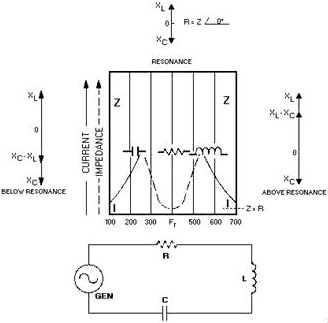
Figure 1-7. - Curves of impedance and current in an RLC series resonant circuit.
Note that the impedance curve does not reach zero at its minimum point. The vectors
above and below resonance show that the phase shift of the circuit at these frequencies
is less than 90 degrees because of the resistance.
The horizontal width of the curve is a measure of how well the circuit will pick
out (discriminate) the one desired frequency. The width is called Bandwidth, and
the ability to discriminate between frequencies is known as SELECTIVITY. Both of
these characteristics are affected by resistance. Lower resistance allows narrower
bandwidth, which is the same as saying the circuit has better selectivity. Resistance,
then, is an unwanted quantity that cannot be eliminated but can be kept to a minimum
by the circuit designers.
More on bandwidth, selectivity, and measuring the effects of resistance in resonant
circuits will follow the discussion of parallel resonance.
Q-3. State the formula for resonant frequency.
Q-4. If the inductor and capacitor values are increased, what happens
to the resonant frequency?
Q-5. In an "ideal" resonant circuit, what is the relationship between
impedance and current?
Q-6. In a series-RLC circuit, what is the condition of the circuit
if there is high impedance, low current, and low reactance voltages?
How the Parallel-LC Circuit Stores Energy
A parallel-LC circuit is often called a TANK Circuit because it can store energy
much as a tank stores liquid. It has the ability to take energy fed to it from a
power source, store this energy alternately in the inductor and capacitor, and produce
an output which is a continuous AC wave. You can understand how this is accomplished
by carefully studying the sequence of events shown in figure 1-8. You must thoroughly
understand the capacitor and inductor action in this figure before you proceed further
in the study of parallel-resonant circuits.
In each view of figure 1-8, the waveform is of the charging and discharging Capacitor
Voltage. In view (A), the switch has been moved to position C. The DC voltage is
applied across the capacitor, and the capacitor charges to the potential of the
battery.
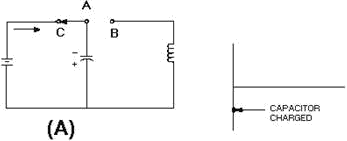
Figure 1-8A. - Capacitor and inductor action in a tank circuit.
In view (B), moving the switch to the right completes the circuit from the capacitor
to the inductor and places the inductor in series with the capacitor. This furnishes
a path for the excess electrons on the upper plate of the capacitor to flow to the
lower plate, and thus starts neutralizing the capacitor charge. As these electrons
flow through the coil, a magnetic field is built up around the coil. The energy
which was first stored by the electrostatic field of the capacitor is now stored
in the electromagnetic field of the inductor.
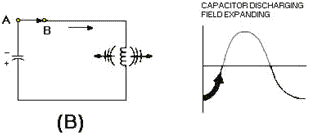
Figure 1-8B. - Capacitor and inductor action in a tank circuit.
View (C) shows the capacitor discharged and a maximum magnetic field around the
coil. The energy originally stored in the capacitor is now stored entirely in the
magnetic field of the coil.
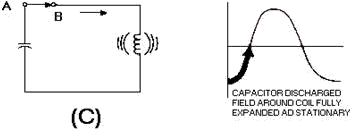
Figure 1-8C. - Capacitor and inductor action in a tank circuit.
Since the capacitor is now completely discharged, the magnetic field surrounding
the coil starts to collapse. This induces a voltage in the coil which causes the
current to continue flowing in the same direction and charges the capacitor again.
This time the capacitor charges to the opposite polarity, view (D).

Figure 1-8D. - Capacitor and inductor action in a tank circuit.
In view (E), the magnetic field has completely collapsed, and the capacitor has
become charged with the opposite polarity. All of the energy is again stored in
the capacitor.

Figure 1-8E. - Capacitor and inductor action in a tank circuit.
In view (F), the capacitor now discharges back through the coil. This discharge
current causes the magnetic field to build up again around the coil.
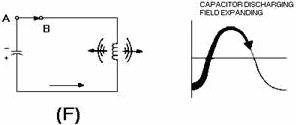
Figure 1-8F. - Capacitor and inductor action in a tank circuit.
In view (G), the capacitor is completely discharged. The magnetic field is again
at maximum.
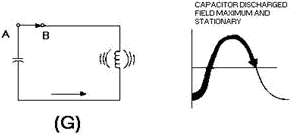
Figure 1-8G. - Capacitor and inductor action in a tank circuit.
In view (H), with the capacitor completely discharged, the magnetic field again
starts collapsing. The induced voltage from the coil maintains current flowing toward
the upper plate of the capacitor.
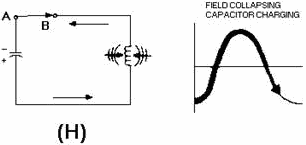
Figure 1-8H. - Capacitor and inductor action in a tank circuit.
In view (I), by the time the magnetic field has completely collapsed, the capacitor
is again charged with the same polarity as it had in view (A). The energy is again
stored in the capacitor, and the cycle is ready to start again.
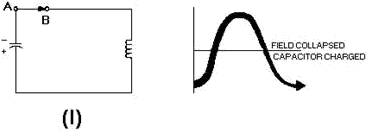
Figure 1-8I. - Capacitor and inductor action in a tank circuit.
The number of times per second that these events in figure 1-8 take place is
called NATURAL Frequency or RESONANT Frequency of the circuit. Such a circuit is
said to oscillate at its resonant frequency.
It might seem that these oscillations could go on forever. You know better, however,
if you apply what you have already learned about electric circuits.
This circuit, as all others, has some resistance. Even the relatively small resistance
of the coil and the connecting wires cause energy to be dissipated in the form of
heat (I2R loss). The heat loss in the circuit resistance causes the charge on the
capacitor to be less for each subsequent cycle. The result is a DAMPED WAVE, as
shown in figure 1-9. The charging and discharging action will continue until all
of the energy has been radiated or dissipated as heat.
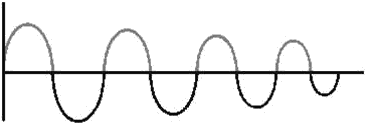
Figure 1-9. - Damped wave.
If it were possible to have a circuit with absolutely no resistance, there would
be no heat loss, and the oscillations would tend to continue indefinitely. You have
already learned that tuned circuits are designed to have very little resistance.
Reducing I2R losses is still another reason for having low resistance.
A "perfect" tuned circuit would produce the continuous sine wave shown in figure
1-10. Its frequency would be that of the circuit.

Figure 1-10. - Sine wave-resonant frequency.
Because we don't have perfection, another way of causing a circuit to oscillate
indefinitely would be to apply a continuous AC or pulsing source to the circuit.
If the source is at the resonant frequency of the circuit, the circuit will oscillate
as long as the source is applied.
The reasons why the circuit in figure 1-8 oscillates at the resonant frequency
have to do with the characteristics of resonant circuits. The discussion of parallel
resonance will not be as detailed as that for series resonance because the idea
of resonance is the same for both circuits. Certain characteristics differ as a
result of L and C being in parallel rather than in series. These differences will
be emphasized.
Q-7. When the capacitor is completely discharged, where is the energy
of the tank circuit stored?
Q-8. When the magnetic field of the inductor is completely collapsed,
where is the energy of the tank circuit stored?
PARALLEL RESONANCE
Much of what you have learned about resonance and series-LC circuits can be applied
directly to parallel-LC circuits. The purpose of the two circuits is the same -
to select a specific frequency and reject all others. XL still equals XC at
resonance. Because the inductor and capacitor are in parallel, however, the circuit
has the basic characteristics of an AC parallel circuit. The parallel hookup causes
|





















